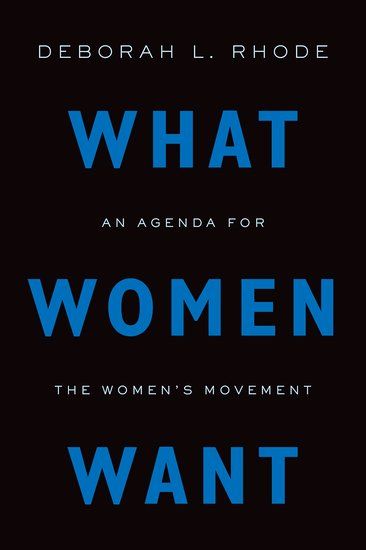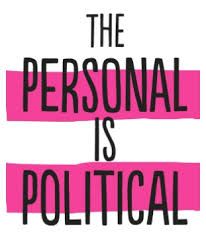
写字的人 I write.
"I'm a feminist, but...": Third Wave Feminism
"I'm a feminist, but...": Third Wave Feminism
Excerpts from Chapter 1 of What Women Want , pp.15-17
[Text]Deborah Rhode [Translation]Liu Manxin

Another challenge to women's organizations arises from within the women's movement, from young women in so-called "third wave" feminism. Third-wave feminists use this new term to distinguish themselves from the first-wave feminist movement of the late 19th and early 20th centuries, and the second-wave feminist movement of the 1970s and 1980s. Rebecca Walker's article in Ms magazine in 1992 made the label popular. The discriminatory treatment received by Anital Hill during the hearing of U.S. Supreme Court Justice Clarence Thomas inspired Walker to write this article, which was also used to respond to various remarks in the media claiming that the United States has entered a "post-feminist era." Walker declared, "I am not a post-feminist feminist." "I am the third wave." [1] Then, Walker and Amy Richards established the "Third Wave Foundation" to focus on supporting women's rights under the age of 30. Activists.

Perhaps the most striking feature of third-wave feminists is that they do not have a specific list of political goals. As activists, they are often deeply personal and inclusive, and are always mindful of the intersectionality of identities, including race, class, ethnicity, sexual orientation, and more. The Bust Guide to the New Girl Order declares, “We have entered the age of DIY feminism, sisters, do your own feminism. … Your feminism is what you want it to be, It’s what you make of it. Define your own goals. Fight for and take back your own F-word.” [2] Third-wave feminists appear to be very eclectic. They define themselves as the opposite of second-wave feminism, because in their view, second-wave feminism is "restrictive, old-fashioned, outdated" and elitist [3] . Women of color are often the main critics of second-wave feminism. Many people believe that the second-wave feminist movement is dominated by middle-class white women and often does not care about minority issues. [4] For third-wave activists, the focus of the feminist movement should transcend gender. Women’s rights “cannot be obtained in isolation, nor recognized across race, class, and culture, unless the feminist movement enters the broader society. The field of economic justice." [5] Compared with the previous generation, third-wave feminists usually claim to be less strict, less judgmental, more willing to express sexual reservations, and more willing to actively accept a feminine image. [6] They focus mainly on personal narratives, and collect personal narratives into books or online discussions to gain a wider audience. [7]
Third wave feminism started out as a critic of the second wave, and it also faced a lot of criticism. In the view of many commentators, third-wave feminists have merely set up a straw man of their own making, completely ignoring the voices of women of color in the second-wave feminist movement and the "sex supporters" of the second wave. [8] Criticism of the insensitivity of second-wave activists to racial issues has made activists like Gloria Steinam, who often strive to stand on the stage with minority women and respond to their demands, heartbroken. Steinam later wrote in the article that the criticism made her feel "like a sitting dog being told to sit down. ...Imagine how frustrating it is that you are constantly fighting against the racial divisions of the feminist movement, but they are not Accusing you of being the real instigator of this partition.” [9]
In addition, third-wave feminists base their action plans on generational differences, which are often criticized for exaggerating differences, blurring common viewpoints behind them, and further marginalizing certain voices that temporarily do not seem mainstream enough. . [10] This approach puts too much attention on internal conflicts and too little attention on social inequality. Susan Faludi believes class has been particularly overlooked in the third wave. "Those who talk about the intersectionality of race, class, and gender are mostly just lip service, and the third wave movement often ignores economic differences. It is obviously more marketable to just talk about sex or pop culture." [11]
In addition, many commentators are dissatisfied with the atheoretical, apolitical, and narrative framework of the third wave movement. Such a framework "is more like a literary form than a social movement." [12] Third-wave feminists "seem to have abandoned the idea that the goal of feminism is to launch social movements." [13] In the view of critics, a personal narrative-centered approach cannot replace collective action. But "the personal is no longer political," and the possibility of realizing a progressive program is slim. [14] Debora Spar said that abandoning political goals is the most problematic part of the culture of "privatized feminism", which seeks individual solutions to collective dilemmas. [15]

Of course, many of these criticisms also exaggerate the problems of the third wave feminism movement. The younger generation of feminists has not given up political action entirely. Katha Pollitt noticed that the movement turned more to grassroots and online organizations. [16] Blogs and websites like “Feministing” have actually introduced many young women to feminism. At the same time, the broader issues within the third wave movement can open up more opportunities for collaboration and connection. Furthermore, if the feminine image is indeed part of the self-image of most women, the more open attitudes toward sex and gender in third-wave feminist writing will strengthen the appeal of the feminist movement. [17] Criticisms from minority women will also make various women’s organizations more aware of the importance of minority issues.
In this way, the remaining question remains how to channel the forces that enabled the rise of the third-wave feminist movement and how to form a network sufficient to have political influence.
[1] Rebecca Walker, “Becoming the Third Wave,” Ms. Magazine, January 1992, 39.
[2] Astrid Henry, Solitary Sisterhood: Individualism Meets Collectivity in Feminism's Third Wave, in Jo Reger, ed., Different Wavelengths, 83.
[3] Henry, Not My Mother's Sister, 7, 11.
[4] Jessica Valenti, Who Stole Feminism, The Nation, September 29, 2010; Henry, Not My Mother's Sister, 166.
[5] Nancy A. Naples, Confronting the Future, Learning from the Past, Feminist Praxis in the Twenty-First Century, in Reger, Different Wavelengths, 215, 222, 231.
[6] R. Claire Snyder, What Is Third-Wave Feminism? A New Directions Essay, Signs 34 (2008): 175, 179.
[7] For overviews, see Kathleen Kelly Janus, Building Bridges and Finding Common F nist Ground: The Role of the Next Generation in Shaping Feminist Legal Theory, Duke Journal of Law and Gender Policy 20 (2013): 255; Snyder, What Is Third Wave Feminism?; Leslie Haywood and Jennifer Drake, Introduction, in Leslie Heywood and Jennifer Drake, Third Wave Agenda: Being a Feminist, Doing Feminism (Minneapolis: University of Minnesota Press, 1997), 1.
[8] Snyder, What Is Third Wave Feminism, 179–180; Henry, Not My Mother's Sister, 33; Naples, Confronting the Future, 218–222. For the inability of wave theories to capture black feminist history, see Kimberly Springer, Third Wave Black Feminism? Signs 27 (2002): 1059, 1061–1106; Reger, Everwhere and Nowhere, 22.
[9] Gloria Steinem, Forward, in Rebecca Walker, ed., To Be Real: Telling the Truth and Changing the Face of Feminism (New York: Anchor Books, 1995).
[10] Snyder, What Is Third Wave Feminism?, 178; Naples, Confronting the Future, 221; Henry, Not My Mother's Sister, 5; Stacy Gillis and Rebecca Munford, Genealogies and Generations: The Politics and Praxis of Third-Wave Feminism , Women's History Review 13 (2004), 176; Jo Reger, Introduction, in Reger, Different Wavelengths, xxvii.
[11] Susan Faludi, Sandberg Left Single Mothers Behind, CNN.com, March 13, 2013.
[12] Bridget J. Crawford, Toward a Third-Wave Feminist Legal Theory: Young Women, P nography and the Praxis of Pleasure, Michigan Journal of Gender and Law 14 (2007): 99, 126. See also Rory Dicker and Alison Piepmeier , Catching a Wave: Reclaiming Feminism for the 21st Century (Boston, MA: Northeastern University Press, 2003), 91; Reger, Everywhere and Nowhere, 5.
[13] Snyder, What Is Third Wave Feminism?, 186.
[14] For concerns about the personal as no longer political, see Karen Lehrman, The Lipstick Proviso: Women, Sex, and Power in the Real World (New York: Doubleday, 1997), 5.
[15] Debora Spar, Wonder Women: Sex, Power, and the Quest for Perfection (New York: Farrar, Straus and Giroux, 2013), 235–236.
[16] Katha Pollitt, Feminist Mothers, Flapper Daughters?, The Nation, October 18, 2010, 9.
[17] Hyde, The Deep Divide, 39 (almost half of women polled said being feminine was central to what they liked about being a woman).
Like my work?
Don't forget to support or like, so I know you are with me..
Comment…